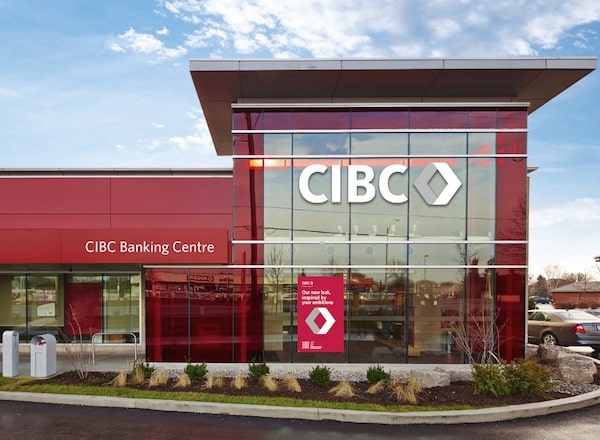
Canadian Imperial Bank of Commerce will launch a new look with a revamped logo this week as part of a multiyear effort to revitalize the bank’s brand and financial performance.Supplied
Canadian Imperial Bank of Commerce will launch a new look with a revamped logo this week as part of a multiyear effort to revitalize the bank’s brand and financial performance.
Executives at CIBC have been working on the rebrand, which was codenamed “Project Tetris” inside the bank, since 2019. The launch of the new logo was originally planned for May, 2020, but executives chose to delay it while they dealt with the fallout from the COVID-19 pandemic.
The change to CIBC’s logo for the first time in decades is the most visible part of its attempt to recast the bank’s corporate culture and its relationships with clients. Chief executive officer Victor Dodig has championed the project, as well as the construction of the bank’s new headquarters in downtown Toronto, called CIBC Square, as touchstones of a broader effort to modernize CIBC.
In recent years, the bank has made acquisitions to bulk up its operations in the United States, invested heavily to update its technology, and worked to retool its retail banking operations to be more competitive with rivals – most notably in mortgage lending. The bank has also worked to shed a reputation for missteps that had lingered from the previous financial crisis, which contributed to a persistent valuation gap between CIBC’s stock and its Canadian banking peers that has now largely closed.
Mr. Dodig says creating greater awareness of, and affinity for, the bank can build on those more tangible changes and help boost financial returns over time.
“One of the things that we really worked hard to do is to build a different bank,” he said in an interview. “It’s the right time to express outwardly the modern vision of what CIBC is to the marketplace.”
The new logo is a custom shade of red, a change from the darker claret red that has been the backdrop to the bank’s brand for years. It recalls a previous logo made for the bank’s centennial in 1966 that featured two chevrons, now joining them together to form a diamond-shaped emblem. The bank also created a new tagline: “Ambitions made real.”
The logo will be revealed to staff at the bank on Wednesday and to the public on Thursday, with a major advertising campaign that the bank intends to reach 95 per cent of Canadians. Digital sites will be updated immediately but the bank will gradually replace signs on 1,021 branches and 3,022 automated banking machines through the fall and into the spring next year. CIBC also has to change 1,500 pieces of advertising, gradually replace more than six million customer cards as they expire, update 6,000 internal forms, and redesign 50 digital applications.
The rebrand is intended to appeal “first and foremost to clients and prospective clients,” Mr. Dodig said. But it is also meant to rally a sense of pride in employees and to make CIBC seem like a more appealing place to work.
CIBC’s brand has an estimated value of $9.1-billion, according to a report by Brand Finance Canada. “We really haven’t invested in it significantly – in terms of our look and feel and what we’re trying to project into the future – in almost two decades,” he said. “It’s an important investment in a valuable asset for our bank.”
The launch of the new brand comes at an opportune moment for CIBC, which has posted strong earnings in recent quarters. Yet the bank, like its rivals, is also facing an uncertain economic recovery from the COVID-19 pandemic. That has created persistent pressure from low interest rates that have reduced profit margins from lending, as well as weak demand for new loans. In that context, the bank could face questions from some investors about whether the rebranding and moving headquarters are the best use of resources.
Mr. Dodig declined to detail the cost of the rebrand, and said the bank will make disclosures in its financial filings. But he also said the project “hasn’t detracted” from other investments the bank needed to make, and is “well within the envelope of our return projections for our shareholders.”
He said he expects the rebrand to help boost net promoter scores – which measure how likely clients are to recommend the bank to others – as well as brand consideration and awareness. If it succeeds, he also thinks the knock-on effects will ultimately help boost key financial metrics such as earnings per share and return on equity.
“I think there’s a derivative effect for our shareholders,” Mr. Dodig said. “The new brand is not a promise of something that we’re going to be. It’s a statement on the bank that we’ve worked hard to become.”
Your time is valuable. Have the Top Business Headlines newsletter conveniently delivered to your inbox in the morning or evening. Sign up today.